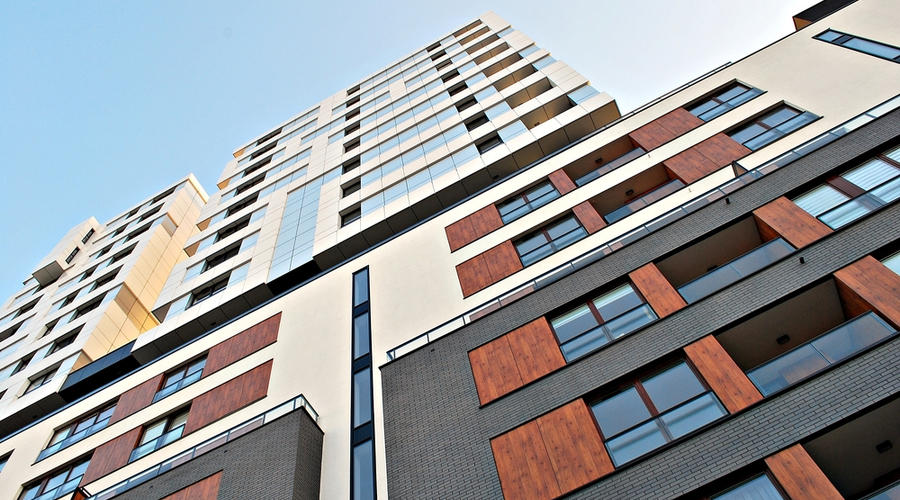Rapid inflation forces FED to raise interest rates
Inflation has hit a 40-year high and shows no signs of slowing, with the war in Ukraine further disrupting global supply chains. The consumer price index grew nearly 8% this February, a level that hasn’t been seen since 1982. This record-setting inflation is putting pressure on the government to act.
The Federal Reserve, whose mandate includes keeping prices stable, has dramatically shifted its tone in the last few months. Less than six months ago, most economists predicted just a couple of interest rate increases for 2022. Today they expect the FED to raise the federal funds in all seven of its meetings this year. The FED is in a difficult position. If it raises rates too quickly, it could lead to a recession, too slowly, and we could see runaway inflation.
How does all of this affect mortgage rates? The expectation of the FED’s moves has already pushed up rates on 30-year fixed mortgages by half a percent. Commercial real estate interest rates are expected to follow a similar path. However, for the moment, the market is holding steady. Real estate investors who foresee rates rising dramatically over the next couple of years are rushing to lock in a lower rate while they still can.
Real Estate sales volume hits record levels
Property sales volume rose by 87.8% in 2021, compared to the year before, and more than doubled the 20-year annual average of $369.24 billion.
Apartment properties are leading the way, accounting for 41.5% of the year’s total sales volume, followed by the industrial sector with 20.5%. Hospitality, a major casualty of the Covid era, saw a stunning recovery with a 16.8% increase in prices from last year.
Investors are rushing to the southeast, where 31% of the apartment sales were made, specifically in Florida, with more than $30 billion in trade. They are also looking further afield in search of good deals. Smaller markets made up 80% of the sales activity, up from 60% last year.
According to Real Capital Analytics, the stability of the commercial real estate market and the expectation of future income growth can explain this performance. Liquidity on the equity side, combined with low-interest rates and support from Fannie Mae and Freddie Mac, on the debt side, also helped push the market up.
The demand for commercial real estate pushed prices to new heights, compressing capitalization rates. Could the Fed’s plan to raise interest rates this year dampen this trend?
Renters by choice?
California-based Banyan Residential is planning to build 230 single-family rental homes, 18 miles north of Austin. The build-to-rent industry has grown rapidly in recent years, with Wall Street firms such as JP Morgan Chase pouring billions of dollars into projects located primarily in the Southwest.
Experts disagree on what’s behind this trend. Some argue that student debt and the high cost of housing are forcing millennials to delay their home buying dreams. Others believe that a new “renter by choice” wants the suburban lifestyle without the commitment of a mortgage.
In either case, the promise of a home office and a bit of green has propelled many to seek an exit from their crowded apartment buildings to a newly built single-family home. Only time will tell if the trend continues in a post-pandemic world.
A housing problem even Big Tech can’t solve
Google, Meta, and Apple are struggling to fulfill their promises to build a total of 40,000 new homes in the Bay Area. Facing negative publicity for their role in California’s housing crisis, the firms have each committed billions of dollars towards solving the issue. However, money alone can’t solve the problem. California’s restrictive zoning laws and burdensome bureaucracy are preventing powerful companies from reaching their goals.
Although the Bay Area’s median income is $112,000, many tech workers find themselves spending a third of their paycheck on their mortgage, or else commuting 90 minutes each way to work. The sight of RVs in front of tech campuses drives home the urgent need for more housing.
Even if the tech behemoths succeed in their development goals, it would barely make a dent in California’s housing crisis. The state needs at least 3.5 million new homes by 2025 to fully provide housing for its population. It will take a combination of private investment and policy changes to meet that demand.
Is the rental market finally cooling down?
After a year of unparalleled rent growth, Apartment List’s national rent index shows signs of a cooling rental market. 2021 was a record-setting year with an 18% increase in rents, however, the last four months have shown sluggish growth of less than 1%. Although rent prices tend to slow down this time of year, we may be seeing signs that the rental market is stabilizing.
Rents are losing ground across the board. In December, prices fell in 61 of the nation’s 100 largest cities like Boston, San Francisco, and Chicago. Smaller cities like Boise, Fresno, and Reno are also experiencing the trend.
The national vacancy index, which has risen for four straight months, might indicate that the winds are changing and that pressure in the rental market is finally beginning to ease.
